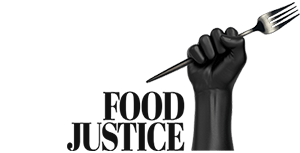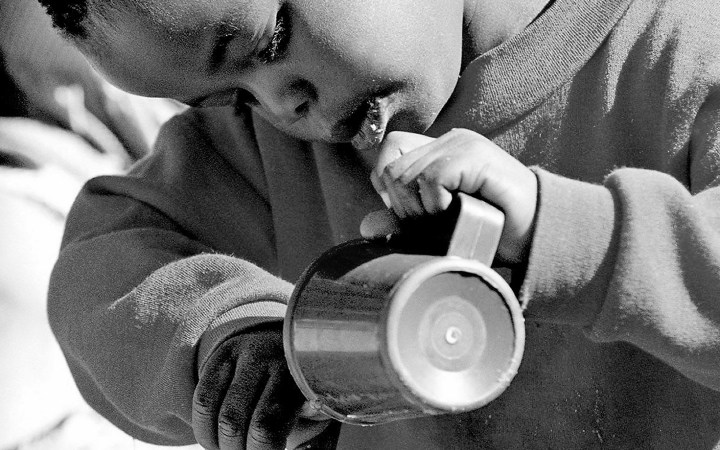
FEEDING NOSIPHO
Finding new pathways to addressing child malnutrition

By taking a lived experience perspective, we can see where different systems overlap to shape dietary health. By developing this systems-based perspective, it is possible to improve the design of food and nutrition-specific policies and programmes.
Child malnutrition is robbing our children of their health and their educational potential and robbing our country of its human potential. Section 28 of the Constitution guarantees our children the Right to Basic Nutrition. And yet, 27% of our children under the age of five are stunted as a result of their mother’s poor nutrition during pregnancy and their own malnutrition in early life. Stunting affects a child’s cognitive development, educational attainment and productivity in adulthood.
At the same time, 13% of our children under the age of five are overweight or obese. This dual burden of malnutrition has health and economic costs we simply cannot afford. The 2018 FuturesCape report on the dual burden of malnutrition found that the Western Cape stood to lose R357-billion in household spending from stunting and up to R590-billion from obesity by 2040. This was calculated as a 5% loss to GDP from foregone spending alone. We cannot afford, economically or morally, to neglect child malnutrition.
In the last year, Maverick Citizen has repeatedly drawn public attention to the injustice of child malnutrition. The recent series by Adele Sulcas on the need for stronger regulation of food advertising and marketing, highlights the impact of a weakly regulated food sector on child health, particularly in the context of poverty. There is clearly a need for stronger governance of the food system in the interests of health and equity.
Our work on the Nourished Child project suggests that working to make healthier foods more accessible and affordable, to have stronger regulation of unhealthy foods and to have clearer guidelines on packaging are all fundamentally important actions, but that there are many more opportunities to improve child health and nutrition.
Within the Nourished Child project we used household interviews and WhatsApp groups in two neighbourhoods – Masiphumelele in Cape Town and Zweletemba in Worcester – to better understand the experiences of mothers and caregivers trying to feed their children nutritious diets. The video, Feeding Nosipho, creates a single narrative out of these findings. It tells the story of a four-year-old girl in Masiphumelele and the many interacting factors that determine the foods she eats over the course of a typical day. The video also shows how nutrition outcomes aren’t just shaped by food practices, but also by the impacts of poor water and sanitation which make children prone to diarrhoea and sickness that robs their bodies of vital nutrients.
Nosipho’s nutrition isn’t just shaped by the kinds of foods that are being made available in the food system, but also by how that food system interacts with a whole range of other systems that shape her daily life.
The food choices made for her are shaped by limited income, by poor access to water, sanitation and reliable energy, by the kind of housing that she lives in, by the kinds of feeding opportunities her early childhood development centre (ECD) provides and by the kinds of nutrition information that are and aren’t being made readily available.
By taking a lived experience perspective we can see where different systems overlap to shape dietary health. By developing this systems-based perspective it is possible to improve the design of food and nutrition-specific policies and programmes.
For example, our work demonstrated how mothers’ decisions about how long to breastfeed their children were shaped in part by the information provided by the clinics and programmes like MomConnect but were also shaped by shared community knowledge, by the influence of their own mothers who were sometimes providing vital financial support, by the fact that the child’s father would pay for nappies and formula and nothing else, and by the pervasive influence of follow-on formula. Our research participants developed a series of recommendations to broaden existing programmes to incorporate these factors.
Nosipho’s story also allows us to develop new entry points for the state to address food and nutrition security. Her story shows us that spatial planning IS food policy, that the provision of basic services IS food policy and making the processes for ECDs to get formally registered more easily, is food policy. When policies and programmes don’t address food explicitly, they too often have a negative effect. By adopting a food-sensitive lens to these issues that we’ve identified, we can have significant benefits on nutrition outcomes.
A systemic approach is beginning to be tested. In November 2021, the Food Working Group of the Provincial Government of the Western Cape went on a learning journey to Zweletemba to spend time with research participants, ECD teachers and food vendors to develop an understanding of these complex interactions and to begin to develop integrated strategies to address child malnutrition across a range of departments.
In the 2022 Sona, President Cyril Ramaphosa called on all social partners – government, labour, business and communities – to work together to grow our economy, create jobs and combat hunger. Within our work, we found many examples where this kind of collective responsibility is bearing fruit.
In Zweletemba the mothers explained how during lockdown, their entire households had received food parcels from their children’s registered ECDs, as a result of private sector and NGO engagement. In Masiphumelele there are ECDs with thriving gardens that feed not just the children at the ECDs but also contribute to local community kitchens. This has been enabled through civil society funding, training and other support.
Perhaps the most exciting opportunity to improve child nutrition through a systems approach is an emerging network of nutrition ambassadors in Masiphumelele. Following the Nourished Child fieldwork, research participants were invited to take part in workshops to make sense of the findings and think through the work’s implications. Some of the research participants in Masiphumelele, together with other community members, have developed a group of Nutrition Ambassadors to advance the cause of child malnutrition in their community. They have recently received money from the Social Employment Fund to support their work. So far, they have met with their ward councillor to get her support, hosted a dietician to deepen understanding about child nutrition and diets, and have held a meeting with the City of Cape Town’s environmental health department to help them work with informal traders to improve vendor compliance with health and safety regulation.
The costs of poor child nutrition are vast – both for our present and for our future. To effectively improve child nutrition will take a systems approach within government. It will require the involvement of the state (national, provincial, and local), the private sector and civil society, with strong representation from the communities most affected. We are starting to see green shoots within and beyond the state, but Nosipho’s story shows us we have a long way to go. DM/MC
Dr Jane Battersby is a senior lecturer, in the Department of Environmental and Geographical Science at the University of Cape Town. The Nourished Child Project is a collaboration between City University, the African Centre for Cities at UCT, Stellenbosch University, the Southern African Food Lab, UNICEF and the Provincial Government of the Western Cape. The project works closely with community partners in Masiphumelele and Zweletemba.




















 Become an Insider
Become an Insider
Comments - Please login in order to comment.